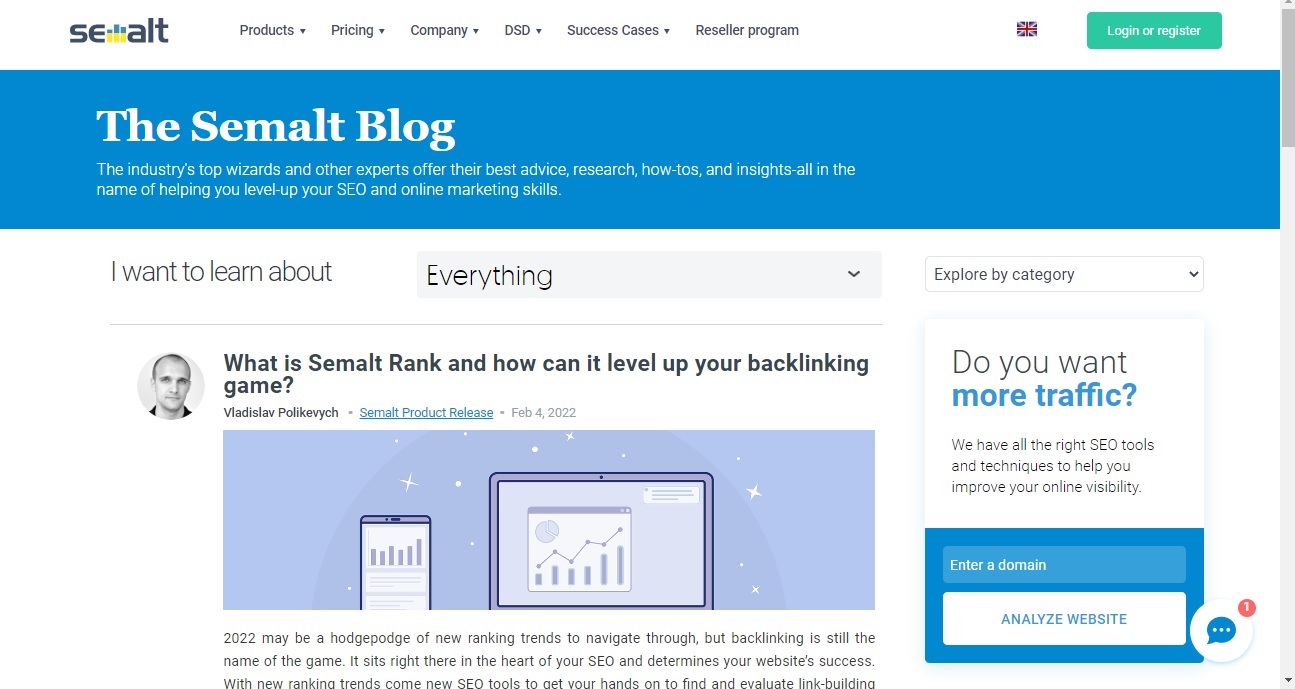Semalt: Site Taxonomy For SEO

You've optimized your homepage, articles, and products, but you still underperform when you evaluate your SEO KPIs. What you may not know is that your site taxonomy may be holding you back.
In this guide, we will explain what site taxonomy means, its importance, and how to optimize the structure of your website.
What is Site Taxonomy?
Website taxonomy refers to the structure used for a website to organize and link its content so users can easily navigate the site and understand its purpose. Every website has a structure that acts like a scaffold, supporting the different layers of content.
How good your site taxonomy is is a question of quality. Is it easy to maneuver? Is it disorganized or poorly managed? Can a user flow from one page to the next and understand the connection between pages?
These are the questions that will help evaluate the quality of your content structure. In a nutshell, site taxonomy is a way of classifying content into groups that share similar characteristics on a website. This helps your audiences and Googlebot find pages with similar content and understand them.
There are three most common site taxonomies:
1. Categories
Category site taxonomy tends to be hierarchical and general in nature. These websites have main categories that include several subcategories. The key advantage of a hierarchical taxonomy is to ensure there aren't too many independent levels. They also help your users and search engines understand these levels.
2. Network
A network website taxonomy is ideal for large websites with a broad range of specialties and content. This structure uses tags to connect relevant content, creating a network of similar content.
3. Facets
Facet website taxonomy uses a spider-web nonhierarchical structure. It has one key term in the center of the structure and multiple links to other pieces of content.
When you create a new category, tag, or facet, you create a term within your taxonomy. In most cases, adding a new term autogenerates a new page based on the URL structure. And this leads to the SEO aspect of site Taxonomy.
Focus On Optimizing Your Content Topics
In the early ages of the internet and SEO, any page could rank for using any keyword. Anyone could create pages for variants of a keyword, and they'd appear on SERP.
Those days are behind us. Now, the reigning advice is to focus on TOPICS. SEO experts need to think beyond keywords and concentrate on satisfying the user intent behind search queries.
Yet we find many websites that believe their golden goose is still a keyword. Sometimes, this is because they don't understand the reality of SEO or because the content on the site is too old. Often, we trace this problem back to poorly maintained taxonomies.
A common problem we've noticed with websites is that people love to publish new content but find it difficult to remove pages. Not deleting outdated and irrelevant pages leads to a teeming mass of potentially cannibalistic and badly organized content.
This is dangerous for your SEO.
Because URLs aren't ranked solely on their independent merits, the performance of one page bleeds to the others. Google John Mueller has explained that Google's quality algorithms evaluate the website overall, so they do look at everything that's indexed. If Google notices that a bulk of the indexed content is of lower quality, they may consider the overall site to be of lower quality.
It is very likely that all those out-of-date taxonomy pages lurking in the depths of your site are causing index bloat. That is when an excessive number of low-value pages drag down the ability of your pages to rank on SERP.
How To Optimize Site Taxonomies
 Ultimately, you want users and search engine bots to understand your sites. While this may seem obvious, pulling it off requires a good understanding of site taxonomy and how to develop a smooth content flow structure.
Ultimately, you want users and search engine bots to understand your sites. While this may seem obvious, pulling it off requires a good understanding of site taxonomy and how to develop a smooth content flow structure. SEO Category Pages
If you are a Technical SEO, you have most likely spent endless hours designing or redesigning category trees.
To do that, you must have gone through several stages of research, analysis, and branding. You should also be familiar with the looks on board members' faces when you try to explain the importance of what you do. After all this, you still have to sit through nerve-racking launches to see if all your hard work paid off.
But is this all that site taxonomy involves? The answer is NO.
On an enterprise-level website, there can be between 50-400 categories and subcategories, but thousands of pages that are autogenerated by other taxonomies may be from networks, facets, or a combination of both.
Optimizing for only a fraction of your website won't do you much good as long as you remain anchored to poor-quality pages. There is also a high chance that in some of your curated category pages is an unseen tag page cannibalizing a better page for the same topic. This leaves a negative impact on the user experience as it makes it more difficult for users to find the updated version of that tag.
SEO Network Pages
Create a database export of every tag on your website. Excessive tagging is bad, and they are most common in sites that allow content creators to assign free-form tags to posts.
Tags are designed to speak to entities in the story. They refer to things like a person, a broader topic, a notable point, an event, or a location.
More often than not, sites have no set limitations, methods, or conventions for adding tags. You don't expect every content creator to use the same words and many redundant tag pages. Instead, you can use autocomplete to suggest existing tags, so content creators use synchronizing tags across pages.
SEO Faceted Navigation
Enterprise-level websites Are the most likely to have bloated faceted navigation. For many sites, the problem is worsened because they allow free-form entry. So you end up with a color filter with three different colors.
With only three colors, you create thin content issues for users who want other uncommon colors. This annoys the user because there are only three items available.
For other sites, there is the issue of trying to balance users to filter down to their exact intent against indexable pages being unique and high quality.
Creating Quality Taxonomy is Not a one-time-event
This is a process that never ends. Because everything is always in flux, your site taxonomy can never be perfect.
- Market conditions change
- Changes in user behavior
- New products in the market
- Categories become obsolete
You need a plan on how to optimize your site taxonomy on a regular basis.
If you need to learn more about the subject of SEO and website promotion, we invite you to visit our Semalt blog.
